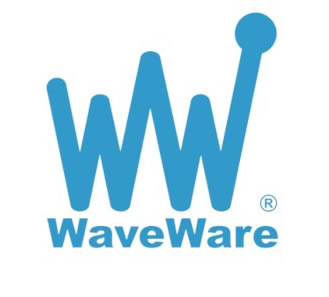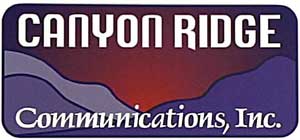Selected portions of the BloostonLaw Telecom Update, and/or the BloostonLaw Private Users Update — newsletters from the Law Offices of Blooston, Mordkofsky, Dickens, Duffy & Prendergast, LLP are reproduced in this section with the firm’s permission.
| BloostonLaw Telecom Update | Vol. 18, No. 7 | February 18, 2015 |
Special Access Data Collection Responses for Small Entities Due February 27Small businesses with 1,500 or fewer employees that are required to provide data and information in response to the FCC’s Special Access Data Collection must do so by February 27. As a reminder, all providers and purchasers of special access services (including, but not limited to, ILECs, CLECs, inter-exchange carriers, cable system operators, fixed wireless service providers (including WISPs), terrestrial and satellite mobile wireless service providers, electric utilities, local government entities, interconnected and non-interconnected VoIP providers, certain providers of information services and third party network providers) and certain entities that provide “best efforts” business broadband Internet access services in areas where the ILEC is subject to price cap regulation must respond. We are available to help our clients with the preparation of the required report. Headlines
Net Neutrality Ex Parte Filings Pile Up as Commission Vote Draws NearWith just eight days until the FCC votes on the new Net Neutrality order, ex parte filings for and against Title II regulation of retail broadband Internet access continue to pile up at the FCC. On February 9, USTelecom met with Commissioners Clyburn, Pai, and Rosenworcel to assert that the
substantive goals of the administration can be met without resorting to Title II reclassification, and that Title II reclassification would “reverse a longstanding bi-partisan consensus that broadband providers have relied on to invest over a trillion dollars in building the Internet and under which edge and content providers have met unprecedented growth and success.” USTelecom also argued that Title II reclassification is likely to prevent innovations in broadband service that would offer lower cost/lower usage options to customers. Finally, USTelecom argued that the FCC did not have authority to pre-empt state laws governing municipal broadband provision. On February 10, Cox met with staffers of Commissioners O’Rielly, Clyburn and Pai’s offices to discuss the company’s “deep concerns” about Title II reclassification, foremost among them being the potential for rate regulation. Cox also argued that the NPRM leading up to the Order did not provide any notice of the prospective for any regime governing the exchange of Internet traffic, and in any event such regulation would introduce “significant competitive distortions, arbitrage opportunities, and other harms.” Finally, Cox expressed concern about the possibility of increased pole attachment fees or other regulatory taxes or charges. The same day, COMPTEL, New America’s Open Technology Institute, Free Press, the Computer and
Communications Industry Association, the Internet Freedom Business Alliance, Ad Hoc Telecommunications Users Committee, Level 3, Cogent, and Netflix met with staff for Commissioner Clyburn’s office to express support for classification of broadband Internet access service as a telecommunications service under Title II The parties also reiterated support for the Commission to assert jurisdiction over Internet interconnection, and asked the FCC to affirm that it would be unjust and unreasonable for broadband Internet access service providers to engage in practices at the interconnection point that have the purpose or effect of circumventing or undermining the effectiveness or goals of open Internet rules. Also on the 10th, Comcast met with staff for Commissioner Pai’s office to argue that applying the entirety of Section 201(b) to broadband would be “plainly inconsistent” with statements by President Obama and Chairman Wheeler that broadband providers will not be subject to rate regulation. Comcast also argued that any assertion of jurisdiction over Internet traffic exchange arrangements should clearly apply to all parties to said arrangements, such as transit delivery providers and content delivery networks, and not just retail broadband providers. Finally, Comcast argued that any new transparency requirements should not obligate broadband providers to disclose information they do not possess. On February 11, AT&T met with staff from Commissioners O’Rielly and Pai’s offices to argue that the FCC does not have the authority to reclassify Internet access as a common carrier service under Title II, calling the FCC’s interpretation of how the service works “imaginary.” AT&T further argued that the FCC does not have the authority to apply Net Neutrality rules to mobile broadband services. The same day, NARUC met with Wireline Competition Bureau staff to state that it will support whatever legal rationale the Commission adopts to support imposition of net neutrality principles, and asked the Commission to clarify that the change from TDM to IP does not change the functional characteristics or the classification (as telecommunications) of a service. NARUC also provided proposed language for the forbearance portion of the Order if the Commission does use Title II in combination with forbearance. Also on the 11th, WISPA met with staff at Chairman Wheeler’s office to reiterate its support for the light touch regulatory approach adopted in 2010 and for exemptions for small broadband Internet access providers from the new rules. WISPA’s primary concern was the increase in disclosure and reporting obligations, which harm small providers by requiring them to increase staff and divert time away from focusing on deployment. On February 12, Verizon met separately with the staffs of Commissioner O’Rielly and Commissioner Pai staff, asserting that the Commission should follow the D.C. Circuit’s “roadmap” for open Internet rules based on Section 706, and that “any attempt to reclassify broadband Internet access service as a Title II
telecommunications service would be a radical and risky change to communications policy.” According to
Verizon, any such reclassification would “cause significant, harmful consequences” and would be “unlikely to withstand judicial review.” Verizon also argued that Internet interconnection should not be subject to Net Neutrality rules, and that any new rules should not apply to “specialized services.” FCC Issues List of Census Blocks Removed From Price Cap Offer of Model Based SupportOn February 13, the FCC released a Public Notice announcing the list of census blocks that will be removed from the offer of model-based support for CAF Phase II due to the fact that these blocks were included in a non-winning Rural Broadband Experiment application. The full list of excluded census blocks can be accessed here. Back in December, the FCC invited applicants for Rural Broadband Experiment support who were not selected as provisionally winning bidders to submit certain financial and technical information to keep their application in consideration for funding made available by defaulting provisionally winning bidders. At the time the FCC implemented this process, it also decided that it would remove from the offer of CAF Phase II model-based support those census blocks funding category one applications that were preserved for consideration in this way. However, the FCC further concluded that no census blocks would be excluded from the offer of support for price cap carriers “where the rural broadband experiment applicant is seeking a waiver of one of more requirements established for rural broadband experiments, including the submission of the requisite financial and technical information.” In the same Public Notice, the FCC also announced that it has posted updated answers to Frequently Asked Questions (FAQs) regarding the rural broadband experiments on the Commission’s website. The FAQs are available at http://www.fcc.gov/encyclopedia/rural-broadband-experiments. Law & Regulation
Comment Sought on New FRN Type for Broadcasters that Would Avoid Social Security NumbersOn February 12, the FCC released a Further Notice of Proposed Rulemaking seeking comment on a proposal to create a new mechanism for obtaining a “restricted use” FRN (“RUFRN”) through CORES for use with the Form 323 Broadcast Ownership Report. The RUFRN, which would not require a Social Security number, would be limited to the reporting of individual attributable interest holders in commercial and noncommercial broadcast stations on ownership reports. Comment and reply comment deadlines have not yet been established. According to the FNPRM, this proposal is intended to address some of the privacy and data security concerns that commenters raised with respect to prior proposals while still enabling the Commission to uniquely identify reported individuals, obtain data reflecting a more useful, accurate, and thorough assessment of minority and female broadcast station ownership in the United States and reduce certain filing burdens. It is intended to replace Special Use FRNs, the FCC’s first attempt to develop an alternative to the FRN that did not require a Social Security number. Enforcement Bureau Dismisses Verizon Complaint on Pole Attachment RatesOn February 11, the FCC’s Enforcement Bureau released an Order dismissing a complaint in which Verizon alleged that it is paying unjust and unreasonable pole attachment rates to the Florida Power and Light Company. Specifically, the FCC found that Verizon had failed to demonstrate that the rates in question were unjust and unreasonable because it merely compared the rate it pays under the agreement to the rate bands developed by the FCC in the 2011 Pole Attachment Order, without demonstrating the other requirements associated with those rates also applied. The Bureau was careful to emphasize, however, that it did not find that the rates in the agreement between Verizon and Florida Power were just and reasonable; but rather that Verizon failed to demonstrate they were unjust and unreasonable. As such, Verizon may refile its complaint and attempt to fill the evidentiary gaps. The dispute arose from an agreement between Florida Power and a predecessor to Verizon that has been in effect since 1975. When the FCC issued its Pole Attachment Order in 2011 in which it established a New Telecom Rate and an Old Telecom Rate for incumbent LECs (both of which were well below the contract rate Verizon was paying to Florida Power), Verizon sought to renegotiate its rate. According to Verizon, Florida Power refused, and instead relied on a clause in the contract that kept the current rate in effect until a new rate could be agreed upon. To show that the rates in the agreement were unjust and unreasonable, Verizon simply compared them to the rates established in the Pole Attachment Order and suggested that they were so much higher as to be per se unreasonable. However, in establishing the New Telecom Rate and the Old Telecom Rate, the FCC expressly stated that the New Telecom Rate only served as a point of reference if the incumbent was similarly situated with competitive LECs, and that the Old Telecom Rate was the appropriate point of reference where the agreement provided the incumbent with substantial benefits over other attachers. The Enforcement Bureau found that because Verizon received significant benefits under the agreement which are not available to competitive LECs, and made no effort to quantify the value of these benefits, the Enforcement Bureau could not find that the rates were per se unjust and unreasonable. FCC Clarifies Rural Call Completion Order Recording RequirementsOn February 13, the FCC released a Declaratory Ruling in which it clarified and provided additional guidance regarding how providers must record, retain, and report certain information. Specifically, the FCC found that covered providers may not count unanswered call attempts as answered calls regardless of the Integrated Service Digital Network User Part (ISUP) Case Code returned. In Appendix C of the FCC’s Order, the FCC stated that calls signaled back with ISUP 16 should be reported as answered. However, Verizon and Level 3 raised concerns that cause code 16 is also used to indicate that the calling party hung up before the called party answered. Allowing such calls to be counted as “answered”, they argued, would lead to artificially high answer rates. In response, the FCC sought comment and some parties argued that providers should count call attempts as “answered” as long as the network generates SIP cause code 16, even if the calling party hangs up before the call is answered. The FCC disagreed, stating that this interpretation clearly contradicted the plain meaning of the definition of “answered call” in the Order. Industry
The Price of Privacy? $30 Per Month, According to AT&TThe Wall Street Journal’s technology blog is reporting that AT&T’s relatively recent 1 Gbps internet service called GigaPower (debuted in Austin, Texas in 2013 and just this past Tuesday in Kansas City, Missouri) comes with a unique twist: AT&T uses GigaPower customers’ search terms, Web pages visited, and links clicked to help advertisers target ads on Web pages, e-mail messages or direct mail. According to WSJ, the tracking remains in effect “even if you clear cookies, use an ad block program, or switch on a browser’s do-not-track settings.” According to the company’s FAQ, some examples of how the data will be used include: - If you search for concert tickets, you may receive offers and ads related to restaurants near the concert venue.
- After you browse hotels in Miami, you may be offered discounts for rental cars there.
- If you are exploring a new home appliance at one retailer, you may be presented with similar appliance options from other retailers.
Customers can opt out of the usage tracking for a price — $30 per month (on top of the $70 per month service fee). WSJ reported that a spokeswoman for GigaPower contends that the privacy option not as an added fee, but as a discount for customers that allow the company to use their information. “We can offer a lower price to customers participating in AT&T Internet Preferences because advertisers will pay us for the opportunity to deliver relevant advertising and offers tailored to our customer’s interests,” she said. Calendar At A Glance
February
Feb. 20 – Comments are due on Part 1 Competitive Bidding NPRM.
Feb. 25 – Reply comments are due on Unlicensed Use of TV Band and 600 MHz Band Spectrum.
Feb. 27 – Deadline for Special Access Data Collection for small businesses with less than 1,500 employees.
Feb. 27 – Reply comments are due on the FCC’s Incentive Auction Procedures. March
Mar. 2 – Copyright Statement of Account Form for cable companies is due.
Mar. 2 – Annual CPNI Certification is due.
Mar. 2 – FCC Form 477 (Local Competition & Broadband Reporting) is due.
Mar. 6 – Reply comments are due on Part 1 Competitive Bidding NPRM.
Mar. 9 – Reply comments are due on Technology Transitions NPRM.
Mar. 9 – Reply comments are due on Windstream Petition for Declaratory Ruling on DS1/DS3 Access.
Mar. 9 – Comments are due on 911 Outage NPRM.
Mar. 11 – Reply comments are due on the IntraMTA Petition for Declaratory Ruling.
Mar. 16 – Deadline to notify AT&T of Service Provided in CAF Phase I Deployment Census Blocks.
Mar. 31 – FCC Form 525 (Delayed Phasedown CETC Line Counts) is due.
Mar. 31 – FCC Form 508 (ICLS Projected Annual Common Line Requirement) is due.
Mar. 31 – International Circuit Capacity Report is due. April
Apr. 1 – FCC Form 499-A (Annual Telecommunications Reporting Worksheet) is due.
Apr. 1 – Annual Accessibility Certification is due.
Apr. 7 – Reply comments are due on 911 Outage NPRM. | 




































 David George and Bill Noyes
David George and Bill Noyes

































